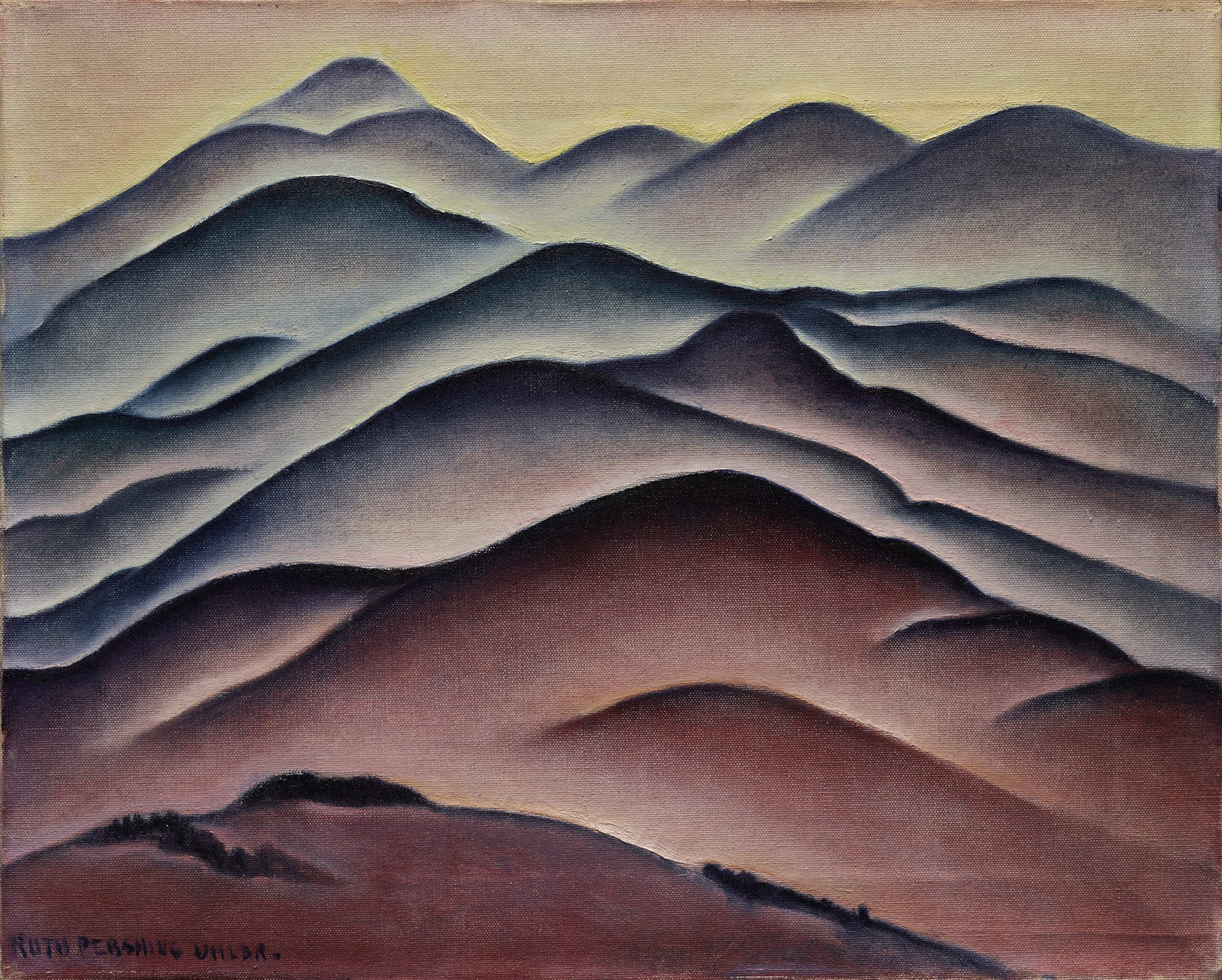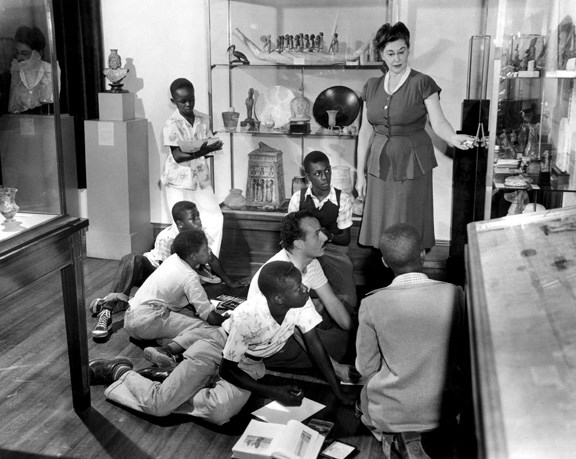Why do some women artists become famous while others become footnotes in art history textbooks? That is the topic of discussion in The O’Keeffe Sisters and Women of American Modernism, a series of short talks at the DMA on February 2. Few art history scholars knew Georgia O’Keeffe had a younger sister named Ida who was also an artist, and whose work is now exhibited in Ida O’Keeffe: Escaping Georgia’s Shadow. Ahead of the talks, we thought we would take a look at another woman modernist in the DMA collection you probably haven’t heard of: Ruth Pershing Uhler.
Ruth Pershing Uhler was born in a small town in Pennsylvania in 1895. Uhler and her family moved to Houston in 1909, but she returned to Pennsylvania to study art. Receiving the proper training was the first hurdle women had to clear to become artists. Women were often encouraged to study “lesser” mediums like watercolor instead of oil, and art was seen as part of a woman’s aesthetic training to create a beautiful home rather than as a career. Uhler didn’t settle for these expectations. She studied at the Philadelphia School of Design for Women (and did learn to work in oil), and after graduating she obtained a fellowship that provided her with her own studio and the ability to paint and exhibit art in Philadelphia. She worked in Philadelphia for 11 years before returning to Houston in 1925 and exhibiting across Texas in the 1920s and 30s.

In 1935 Uhler went to Santa Fe with friend and fellow Texas artist Grace Spaulding John. The landscape of New Mexico inspired a series of nine paintings that Uhler completed after returning to Houston the next year. Earth Rhythms (c. 1935), recently acquired by the DMA, belongs to this series. While it is possible Uhler saw and responded to the work of Georgia O’Keeffe, Uhler’s paintings—with undulating forms that glow with an almost spiritual quality—are also reminiscent of Transcendentalists like Raymond Johnson and Agnes Pelton, who were working in New Mexico during the same period. Uhler’s series was exhibited in 1936 at the Twelfth Annual Exhibition of Houston Artists.

At the time, it was impossible for a woman to support herself as a full-time painter without a gallery to represent her and sell her art, so most women artists took second jobs. Uhler became a teacher at the Museum of Fine Arts, Houston (MFAH) in 1937, and in 1941 she became the MFAH’s first curator of education, a position she held until just before her death in 1967. In the same way that Ida O’Keeffe held nursing and teaching jobs on and off her entire life, being an art educator provided Uhler with financial stability, independence, and creative fulfillment. She was hugely influential in the growth of the MFAH’s education programs, but the demands of her job led her to abandon painting.
Curiously, one day in 1940 Uhler intentionally destroyed many of her paintings in a fire. She built the bonfire in the backyard of Grace Spaulding John’s house, which she had been house-sitting. John’s daughter saw her and asked what she was doing. Uhler officially ended her career as a painter that day, remarking, “Well, I only want my best work to survive.” Consequently, her works are few and difficult to find today.
As art historians reconsider the influence of women artists in modernist movements, and as Texas artists are given more serious attention, artists like Uhler will become more popular. It takes time and a conscious effort on the part of curators to shine a light on under-recognized women artists, but we get a fuller and more realistic view of art history when women’s work is recovered from the margins.
Lillian Michel is the Marketing and Communications Coordinator at the DMA.